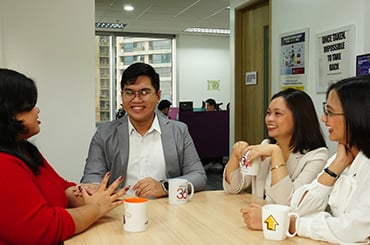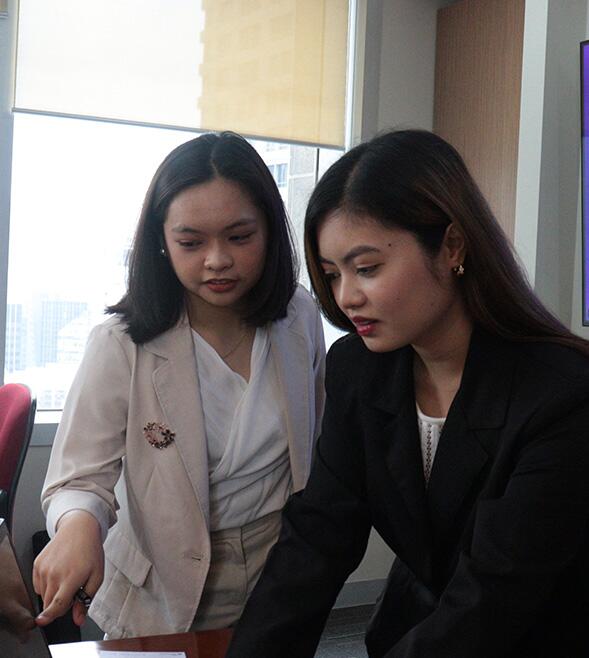-
Annual and short period audit
We perform audit engagements in accordance with the Philippine Standards on Auditing (PSA), as required by required by national legislation or other regulations of agencies such as the Bureau of Internal Revenue (BIR), Securities and Exchange Commission (SEC), Bangko Sentral ng Pilipinas (BSP), Insurance Commission (IC), Cooperative Development Authority (CDA), etc.
-
Review engagement
We provide a limited or moderate level of assurance that financial statements are free from material misstatements, in accordance with the Philippine Standard on Review Engagements (PSRE).
-
Financial statements compilation
We help in the preparation of financial statements of clients in accordance with Philippine Standard on Related Services (PSRS) 4410.
-
Security offerings services
We provide assurance services for our clients’ debt and equity security offerings. These include audits or reviews of financial statements, examination of prospectuses, and issuance of comfort letters as required.
-
Agreed-upon procedures
We perform agreed-upon procedures in accordance with applicable professional standards, delivering factual findings reports tailored to the specific needs of our clients and relevant third parties. Our services include asset and inventory count observations, financial statement translations, and assistance with regulatory applications such as capital stock increases and debt-to-equity conversions.
-
Other related services
We help our clients stay ahead of the evolving complexities in the accounting landscape. Our offerings include training programs, transition and implementation planning, and impact assessments related to newly adopted accounting standards, such as Philippine Financial Reporting Standards (PFRS Accounting Standards) and other relevant frameworks.
-
Tax advisory
With our knowledge of tax laws and regulations, we help safeguard the substantive and procedural rights of taxpayers and prevent unwarranted assessments.
-
Tax compliance
We aim to minimise the impact of taxation, enabling you to maximise your potential savings and to expand your business.
-
Transfer pricing
We provide comprehensive Transfer Pricing (TP) solutions suited to the needs of the client.
-
Corporate services
For clients who want to do business in the Philippines, we help set up the business and assist in determining the appropriate and tax-efficient operating business or investment vehicle.
-
Tax education and advocacy
We offer seminars and trainings on tax-related developments and special issues of interest to taxpayers.
-
Business risk services
We cover a wide range of solutions that help you identify, address, and monitor the risks of your business.
-
Business consulting services
We help organisations improve their operational performance, efficiency, sustainability, and effectiveness in today’s dynamic business landscape.
-
Transaction services
We help organisations provide strategic advice and support throughout the transaction process and provide financial reporting advisory services to help companies successfully navigate the complex financial requirements in a broad range of scenarios.
-
Forensic advisory
We provide support to organisations on dispute resolution, fraud prevention and detection, insurance claims, and other situations requiring detailed investigations.
-
ProActive Hotline
We empower organisations to uphold integrity through safe and anonymous reporting.
-
Sustainability
We promote responsible and innovative practices that reduce our environmental footprint, promote social responsibility, and ensure long-term economic viability
-
P&A Academy
P&A Grant Thornton's unwavering commitment to relevance extends to its learning arm - P&A Academy.
-
Accounting Services
At P&A Grant Thornton, we handle accounting services for several companies from a wide range of industries. Our approach is highly flexible. You may opt to outsource all your accounting functions, or pass on to us choice activities.
-
Payroll Services
We streamline payroll operations with secure, technology-driven solutions that enhance accuracy, ensure compliance, and free organisations to focus on strategic priorities.
-
Human Capital Outsourcing Services
We deliver highly trainable and experienced accounting professionals matched to client requirements, covering center and attrition management, and special projects.
-
Our values
Grant Thornton prides itself on being a values-driven organisation and we have more than 38,500 people in over 130 countries who are passionately committed to these values.
-
Global culture
Our people tell us that our global culture is one of the biggest attractions of a career with Grant Thornton.
-
Learning & development
At Grant Thornton we believe learning and development opportunities allow you to perform at your best every day. And when you are at your best, we are the best at serving our clients
-
Global talent mobility
One of the biggest attractions of a career with Grant Thornton is the opportunity to work on cross-border projects all over the world.
-
Diversity
Diversity helps us meet the demands of a changing world. We value the fact that our people come from all walks of life and that this diversity of experience and perspective makes our organisation stronger as a result.
-
In the community
Many Grant Thornton member firms provide a range of inspirational and generous services to the communities they serve.
-
Behind the Numbers: People of P&A Grant Thornton
Discover the inspiring stories of the individuals who make up our vibrant community. From seasoned veterans to fresh faces, the Purple Tribe is a diverse team united by a shared passion.
-
Fresh Graduates
Fresh Graduates
-
Students
Whether you are starting your career as a graduate or school leaver, P&A Grant Thornton can give you a flying start. We are ambitious. Take the fact that we’re the world’s fastest-growing global accountancy organisation. For our people, that means access to a global organisation and the chance to collaborate with more than 40,000 colleagues around the world. And potentially work in different countries and experience other cultures.
-
Experienced hires
P&A Grant Thornton offers something you can't find anywhere else. This is the opportunity to develop your ideas and thinking while having your efforts recognised from day one. We value the skills and knowledge you bring to Grant Thornton as an experienced professional and look forward to supporting you as you grow you career with our organisation.
One of the greatest threats to any organization is one that comes from within: corporate fraud and misconduct. Often, organizations are more concerned about the external threats they face such as market competition or economic downturns. However, internal threats like fraud can be just as, if not more, damaging. Corporate misconduct is a pervasive issue that can undermine the very foundation of a business.
Fraud encompasses a wide range of unethical activities. From falsifying key records to embezzlement and insider trading, fraud can take many forms, all bringing dire consequences. Small businesses and organizations are the most vulnerable to this: without the proper controls in place, they can easily fall victim to fraudulent activities. Today especially, with the emergence of new technology that both aids and complicates fraud detection, organizations of all sizes must remain vigilant.
At P&A Grant Thornton, we recently hosted a Fraud Forum on "Building Integrity and Resilience Against Corporate Misconduct”. Experts and government officials shared their strategies and best practices as they tackled topics such as the importance of anti-fraud governance, navigating regulatory compliance, and developing an anti-fraud playbook.
In this article, let’s go through the key insights shared during the forum, all towards helping you build a fraud-resistant organization.
Develop Social Consciousness within your Organization
One common misconception is that the responsibility of detecting and dealing with fraud lies solely with key individuals or teams within an organization. During the forum, Hon. Heidi L. Mendoza, former Commissioner of the Commission of Audit and former Undersecretary General of the United Nations Office of Internal Oversight Services, stressed that involving and putting people at the center by developing a social consciousness within your organization is key.
Part of addressing corporate fraud is understanding the needs and sentiments of your people. After all, fraud has four components to thrive: incentive, rationalization, opportunity, and capability. Get to the bottom of this by implementing internal audits to detect discrepancies, reviewing financial records and procedures, interviewing employees and management to understand the context behind unusual behaviors, and enhancing training for staff on fraud prevention and vigilance. Building a partnership between your community, corporation, and auditors is essential for fostering a culture of integrity.
However, developing this required consciousness is easier said than done. With so many moving parts in any organization, things often get busy in the front end of things, and it’s hard to emphasize ethical practices and awareness for people who are simply trying to get by. This is why developing this social consciousness must start from the top: leadership must set the tone by modeling ethical behavior and prioritizing integrity in all business practices.
Compliance and Transparency towards Resilience
Did you know that according to the Association of Certified Fraud Examiners (ACFE), organizations lose up to 5% of their annual revenue to fraud? However, this loss in revenue is not the only cost that businesses incur when they allow fraud to persist. Damaged credibility, legal penalties, and loss of stakeholder trust are also significant consequences.
To that end, corporate compliance remains a key motivator in ensuring ethical business practices. With the emergence of digital fraud, cybercrime, and insider threats, regulatory scrutiny continues to increase in today’s business landscape. In order to keep up with this continued emphasis on compliance, there must be a paradigm shift between the mindset of compliance for the sake of avoiding fines, to a genuine desire for transparency and integrity.
Atty. Oliver O. Leonardo, Director of the Markets and Securities Regulation Department of the Securities and Exchange Commission, Head of the Commission’s Internal Affairs Unit, and Supervising Director of the Anti-Money Laundering Division, after discussing case studies on global incidents of fraud, cited two key takeaways: the importance of transparency & governance, and the need for strengthening compliance mechanisms. He emphasized that compliance not only reduces financial & legal risks but also enhances investor trust and corporate reputation.
Creating Tailored Anti-Fraud Solutions
In truth, there is no one-size-fits-all solution to prescribe for organizations to minimize fraud. Each business differs in risk appetite, scale, industry, and operational complexity, that influence their specific vulnerabilities and needs. Still, it is helpful to view successful organizations’ anti-fraud playbooks as a framework to build upon.
Christopher M. Ferareza, my fellow Advisory Partner and Chief Sustainability Officer at P&A Grant Thornton, discussed the Anti-Fraud Playbook co-developed by Grant Thornton with ACFE. It encompasses 10 major steps anchored on these 5 components of an effective fraud risk management program: Fraud Risk Governance, Fraud Risk Assessment, Fraud Control Activities, Fraud Investigation and Corrective Action, and Fraud Risk Management Monitoring Activities.
Chris highlighted the need for identifying and understanding your organizations current state and long-term goals, creating a culture based on integrity, identifying blind spots based on thinking like a fraudster, utilizing data analysis, and laying the groundwork for the future. A necessary step is viewing all of these actions as the necessary foundation for the continued battle against fraud.
The Path Forward
That is not to say that we should accept fraud as an inevitability in every business. Rather, as we move towards our goal of creating a business landscape fueled by integrity and transparency, we must actively implement and uphold robust anti-fraud measures. Let’s continue to stay vigilant and foster a culture of honesty and accountability!
As published in The Manila Times, dated 19 February 2025




